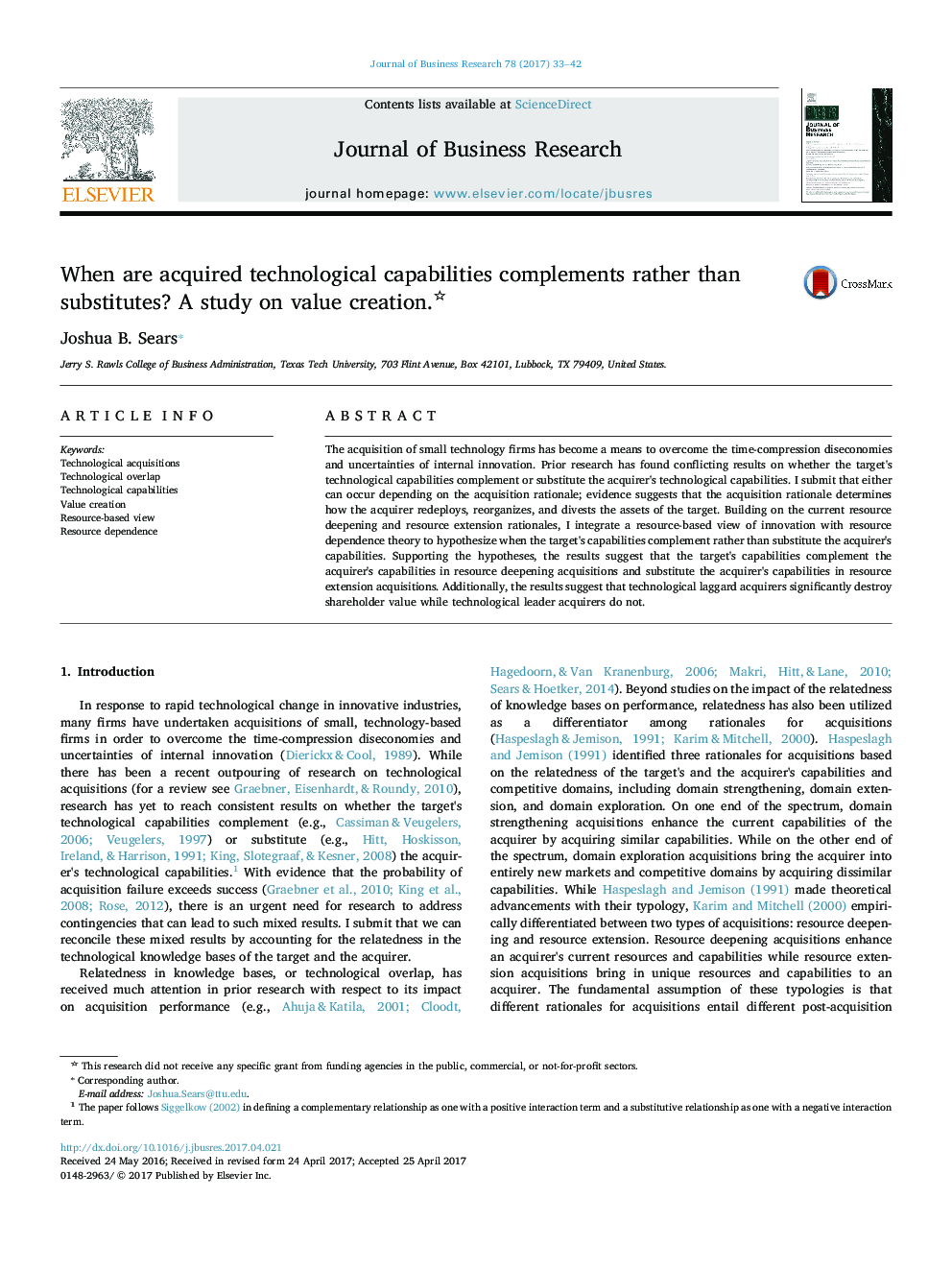| Article ID | Journal | Published Year | Pages | File Type |
|---|---|---|---|---|
| 5109584 | Journal of Business Research | 2017 | 10 Pages |
Abstract
The acquisition of small technology firms has become a means to overcome the time-compression diseconomies and uncertainties of internal innovation. Prior research has found conflicting results on whether the target's technological capabilities complement or substitute the acquirer's technological capabilities. I submit that either can occur depending on the acquisition rationale; evidence suggests that the acquisition rationale determines how the acquirer redeploys, reorganizes, and divests the assets of the target. Building on the current resource deepening and resource extension rationales, I integrate a resource-based view of innovation with resource dependence theory to hypothesize when the target's capabilities complement rather than substitute the acquirer's capabilities. Supporting the hypotheses, the results suggest that the target's capabilities complement the acquirer's capabilities in resource deepening acquisitions and substitute the acquirer's capabilities in resource extension acquisitions. Additionally, the results suggest that technological laggard acquirers significantly destroy shareholder value while technological leader acquirers do not.
Related Topics
Social Sciences and Humanities
Business, Management and Accounting
Business and International Management
Authors
Joshua B. Sears,
